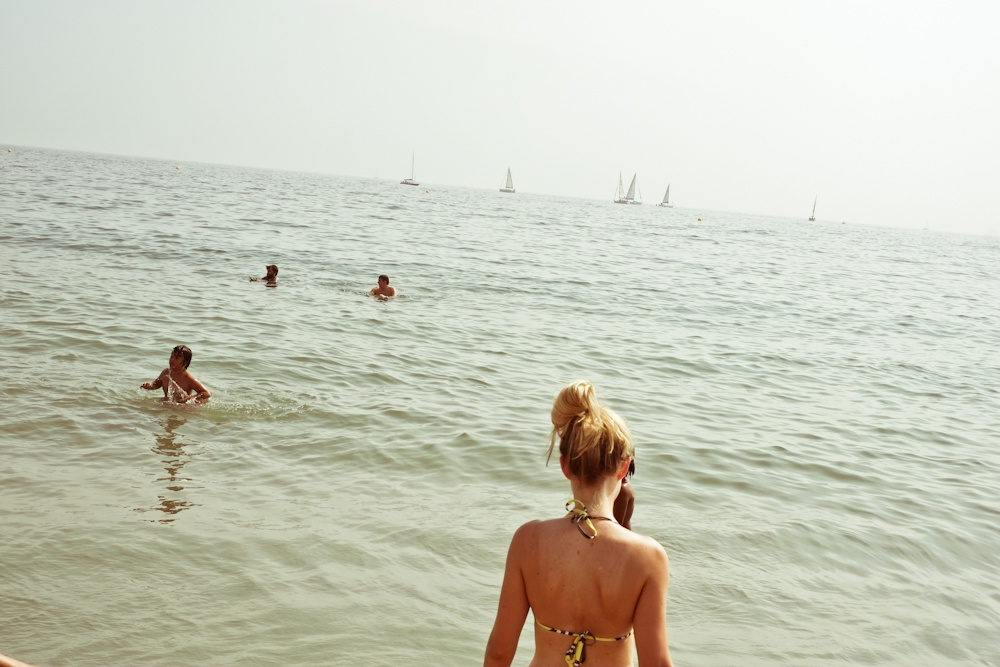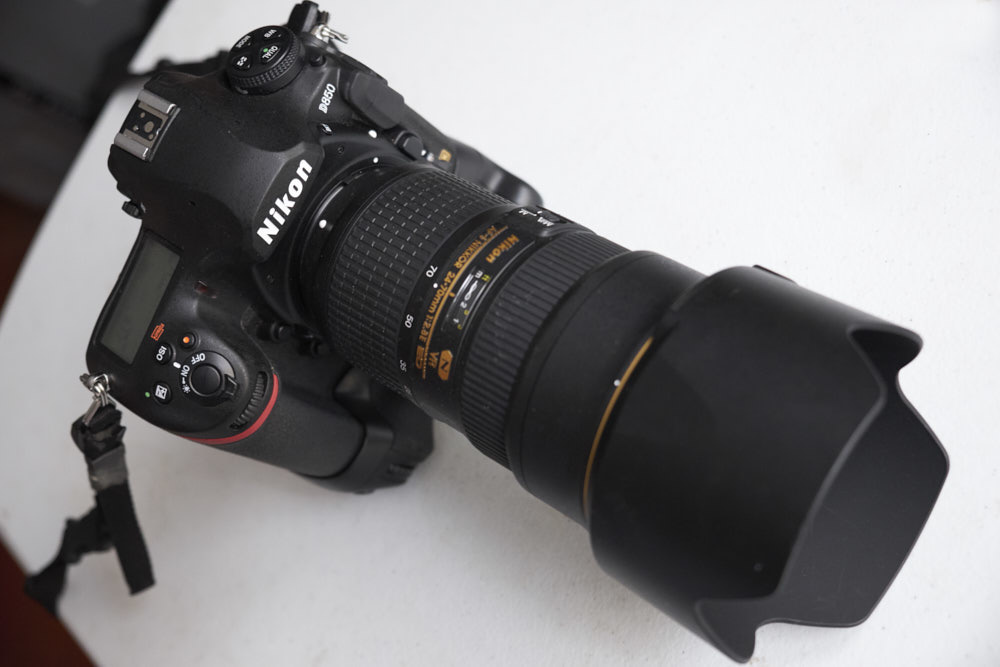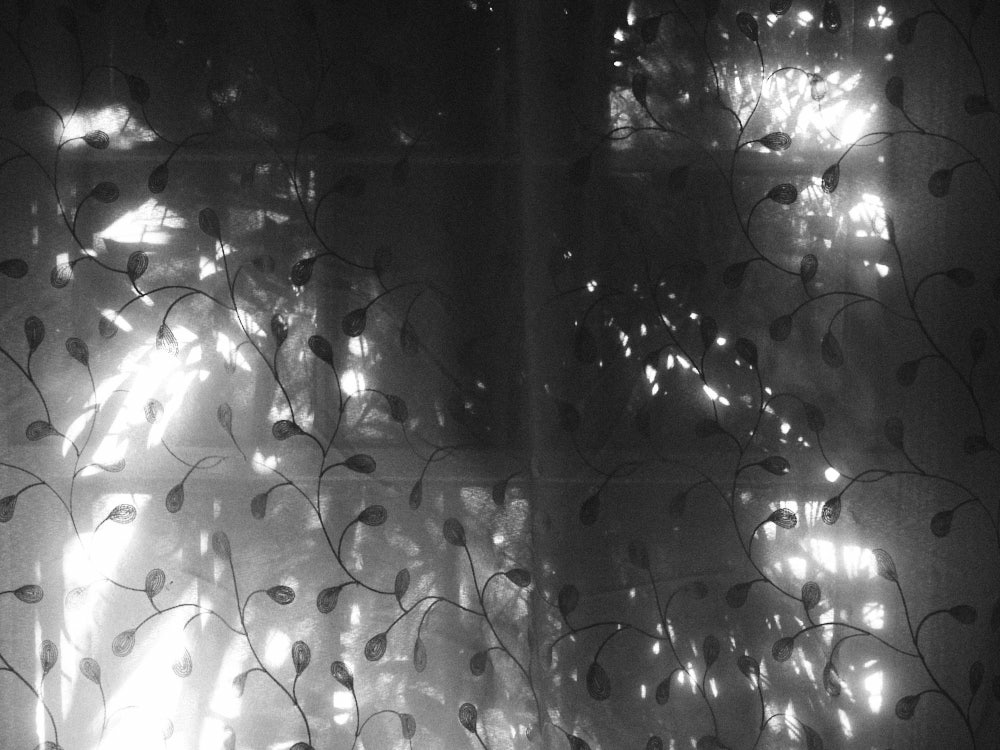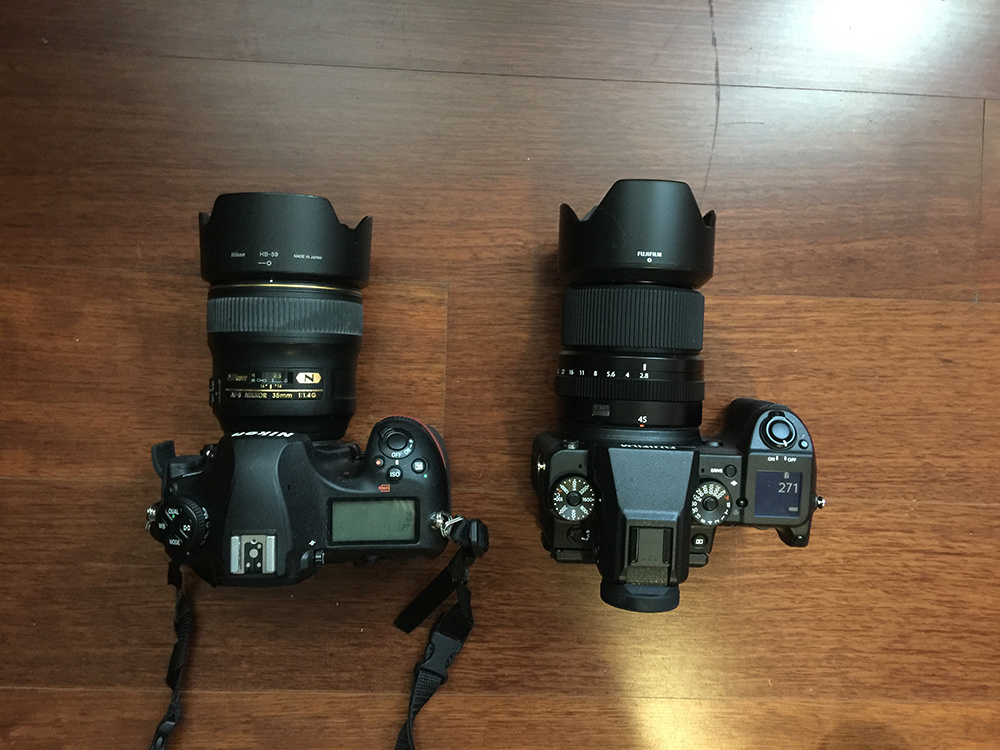Today, I begin a series of five articles going in depth into my experience shooting with the Fujifilm GFX 50S medium format mirrorless camera for an entire month.
The sheer number of articles in my mind that have been generated by shooting with this camera may give you some indication of how I felt about my experience. But, rather than just give you a brief technical review of the camera specs, I thought it might be more useful to those considering purchasing one to give you the full, in-depth story of what it is like to own and operate this camera in the real world. Warts and all. I’ve broken the story of my journey with the GFX 50S into multiple articles in an effort to keep each one slightly shorter than Anna Karenina. I’ve also tried to dedicate each segment to specific aspects of the experience while providing relevant comparisons with other systems. So, without much further ado, let’s get to it.

I’ve never been one for brand names. I am a “why spend more on designer jeans when the no-name ones on the discount rack will do the same job” kind of a guy. I’ve carried the same basic outlook into my life as a photographer.
I am a self-described Nikonian. However, that has always primarily been driven by a decision I made on a whim 14 years ago to buy a Nikon D200. That was the camera that took photography from a hobby to a passion for me. It was the tool that allowed a long dormant interest to fully blossom. It’s what I used to learn. It’s was instrumental in my growth. And, while it doesn’t get a great deal of use these days, it still holds a very desirable piece of real estate on my display shelf.
Since then, I’ve continued to buy Nikon bodies. The build of their cameras has always felt right inside my grip. And, as over the years, I have acquired a great deal of Nikon related lenses and accessories, sheer practicality dictates that I remain loyal to the brand. It helps maintain a certain consistency in my images, but, more importantly, also prevents me from spending an arm and a leg on duplicate sets of lenses to satisfy a growing multitude of potential mounts.
I progressed from the D200 to the D700, the D800, and eventually, the D850. As my career built, so did my client’s needs for more resolution. So, the 45.7MP on offer from the D850 fit the bill. Also, as motion has become more and more a part of my deliverables, the 4K resolution offered by D850 was a large upgrade over the 1080p offered by its predecessor. The files, both still and motion, are unbelievable and exactly what I need to deliver for my clients. In fact, with the future of the camera market and subsequent R&D budgets being clearly set in the direction of mirrorless, I might even venture to guess that the D850 may go down in history as the greatest traditional DSLR ever made.

Yet, a curious thing has happened in parallel to my career with Nikon. Like a random bit of mental inception that grows over time, I’ve continued to use Nikons over the years because they deliver, but have used them less and less for the “joy” of photography. This may simply be a natural result of my passion becoming my career and thus my weapon of choice becoming viewed as a work tool rather than a method of enjoyment.
But nowadays, when I shoot just “for the love of the game,” I tend to find myself looking at different camera brands for inspiration. Okay, maybe more specifically, I tend to find myself turning to Fuji.
About six years ago, I rented an Fuji X-Pro1 for a day trip around downtown LA, and then, eventually, for a much longer trip to Barcelona. At that point in my career, I had already reached the point where even small shoots required significant equipment and the related physical labor needed to tote such gear around, so simply walking the streets with a rangefinder camera and the equivalent of a fast 50mm lens was a much needed breath of fresh air. In an instant, I realized how much I was missing the simple joy of taking pictures. I quickly remembered what it was that made me fall in love with photography. The ability to create art at any moment by just lifting the viewfinder to your eye and pressing down on the shutter.
But, while I loved shooting with it, and even produced a series of images that gained me multiple exhibition opportunities, the idea of switching to Fuji for my client work was never really considered. They were APS-C sized sensors compared to the full frame Nikons I had grown accustomed to. And despite the design, at the time, there wasn’t really a comparison between the two in terms of features.

But the seed had been planted. A couple years later, when the Fuji X100S came out, I picked one up as a travel camera, and I found myself falling in love with its literal pocketability. One of my favorite things to do in life is to wander aimlessly down streets that I know nothing about. Not always the smartest move when you’re lugging thousands of dollars of photo gear with you in a big photo bag that just advertises to those with potential ill intentions. Being able to quickly slide my camera down into my pocket when sensing I may have stumbled into the wrong alleyway is a major benefit.
But, again, despite what the Fuji marketing materials around that time might have suggested, I never really saw the X100S as a practical tool for me to take out in front of clients while simultaneously asking them to pay my increasing day rate.
An incidental meeting at a photo exhibition and a bout of temporary depression led me to purchase the Fuji X-T2. Again, I instantly fell in love. Only this time, Fuji’s features had begun to catch up to it’s usability. It wasn’t “there” yet. But it was getting there.
I loved the X-T2 so much, in fact, that I bought its newer sibling, the X-T3. As if the executives at Fuji were, imagine the thought, actually listening to their customers, the X-T3 took everything right about the X-T2 and amplified it. The autofocus was better. The video was astronomically better. so much so that I was able to use it in conjunction with my far more expensive Canon EOS C200 for major advertising shoots to increase my productivity on set while still providing clients the technical qualities that they expected.

As I’ve just thrown in a third brand name, I think this may also be a good time to mention another peculiar thing that has occurred in my long gear journey leading up to this article. As much as I love the output of my Nikon D850, for whatever reason, I seem to have enjoyed the process of shooting with it less than previous models.
I’m not so sure it has to do with the body itself. I think the reason is because, due to the amazing sensor, I opted to upgrade my glass as well, purchasing the 24-70mm f/2.8 to be able to keep up with the added resolution. And keep up it does. The auto focus is blazingly fast. The images are sharp. It’s a great fit for the camera. But, on a completely personal note, something about the ergonomics of that particular lens have never quite gelled for me. Again, that is completely and utterly subjective to me, my shooting style, and to my own hand. It is in no way a reflection of the camera or lens themselves. Just something in the balance of that combination that didn’t feel perfect. For me.

But, because of this, I’ve pushed less and less to use it in my workflow. And because of the way my workflow operates, it is easier and easier to do so. Specifically, one of my largest clients, a major activewear brand, owns their own studio and their own gear, which happens to be mostly Canon. While I certainly could bring my own camera, it is simply easier to board the plane with a carry-on and shoot with what’s already there.
Also, as the size of my motion productions increases, so does the crew. Due again to sheer practicality, shooting with a well-built cinema camera like the C200 with multiple ports and built for larger productions offers a major advantage over most DSLRs. So, while I upgraded to the D850 primarily for video, I have found that I rarely use it for that purpose.
Back on the still side, as my clients and budgets continue to grow, so does the need to shoot medium format as opposed to full frame. I certainly could shoot a billboard with my D850, and have on many occasions. But there’s something about the incredible detail and dynamic range of medium format that just offers so much more.
Generally, those shoots are done with either a Hasselblad system or a Phase One system (or a combination of both). As these are larger commercial shoots, they are also shot almost exclusively tethered to Capture One so that clients can review the work on set and the creative team can maximize their contributions.

So, logic would naturally say, why not just buy a medium format camera? Well, there’s just one small detail. Traditionally, those cameras cost an arm and a leg. Well, not literally. But maybe. I have no idea how much an actual arm and leg cost on the open market. But, I’m guessing they might be somewhere in the range of the 20K to 60K that would be required to build a proper medium format system. So, while a solid five to six thousand will get you into a 50 MP full frame system (including lenses), shooting with medium format has traditionally been a space reserved for those with clients willing to cover the expense of renting a more expensive camera for the shoot.
That is, until now. When I heard that Fuji was developing a medium format system a few years ago, I was excited. At the time, there was no way to tether it to Capture One, a critical piece of my workflow, but as that has changed in the last year, I found myself increasingly intrigued by the possibilities. I wondered if the dream in my head might come true. Could I combine the image quality of my Nikon sensor, with the increased sensor size of the Hasselblad, with the design and usability of Fuji cameras. Could I possibly have the best of all worlds?
Having just invested a large amount into the D850 and the new lens, I tempered thoughts of actually purchasing one. Even though at $5,500 for the body and a couple thousand for most lenses, the system would be providing medium format sensor with lenses for well under 10K, it was still enough money that it couldn’t qualify as an impulse buy.
But as time dragged on and I began to shoot with more and more rental cameras as opposed to my own, I couldn’t fight the feeling that I at the very least, needed to try this camera out. And, after a very generous amount of prodding, I was able to get my hands on the Fuji GFX 50S for a month to put it through its paces and subject it to pretty much every shooting situation that I would likely find myself in.

Why I Chose the GFX 50S Over the GFX 50R
The first question you might be asking yourself is: why I would opt to try out the GFX 50S over the GFX 50R? For those who don’t know, Fuji makes two versions of their medium format camera, each sharing the same sensor. So, the question might be especially prudent given that the 50R is newer, has the same sensor, and it about $1,000 cheaper. And while I would also love to test out the GFX 50R in the future, I went with the 50S for practical reasons based on my own workflow.
I was recently watching an interview with a Fuji executive at the release of the Fuji GFX 50R system. The way he described the difference between the two bodies seemed to sum it up well. The GFX 50R, a rangefinder style camera, is more for street and travel photography, while the GFX 50S is a “system” camera. Taking their cue from the X-Pro series versus the X-T series, the 50R is built for people walking around solo with just the camera and an eye for story. The way the GFX 50S system is laid out, indicated that it is built with the commercial or studio photographer in mind. Little details like the side body placement of both the tether port as well as the battery compartment are far more complementary for someone who is shooting tethered or might need to change their battery quickly without having to remove the rig from a tripod.

I also like the deep grip on the GFX 50S versus the more narrow profile of the 50R. A lot of manufacturers (I’m looking at you, Sony) have given up substantial grips in an effort to go as small as possible. But, if you’re as clumsy as me, you’ll find that you appreciate the absolute deepest grip possible. Paired with a well-placed and substantial thumb grip on the back of the camera, I found that the stability of this camera when handheld was rock solid. I could even go for long periods of time without the neck strap. Well, sometimes. I did mention I was clumsy, right?
Oh, and one quick note on that neck strap. I’ve seen a number of complaints about the somewhat unorthodox connection points included with the GFX 50S neck strap. Essentially, they’ve traded in the traditional hard triangle through the hole system in favor of a click on system unique to this camera. And while that may limit some of your options for strap shopping, I must say that I find it actually a better design, perhaps because I’m not the best at threading those traditional straps in the first place. But I also like that the Fuji strap has a quick release system, so in situations where a dangling strap may get in the way, this system makes it very easy and quick to remove the strap and keep on going. Of course, this does mean that you need to triple-check when putting the strap back on that it is secure.

What Tools Did I Have to Compare?
I wanted to give the Fuji GFX 50S a full workout in my real world shooting situations. Likewise, I wanted to use it as much in conjunction with my own gear to fairly get a sense of its strengths and weaknesses compared to what I already have (and thus gauge the value of an added investment).
For my test, I had a Fuji GFX 50S body along with three lenses. A 32mm to 64mm f/4 zoom lens. On medium format, this equates to roughly at 25mm to 50mm in full frame format. Considering that on my Nikon 24mm to 70mm f/2.8, I rarely go beyond 50mm, this is actually the perfect focal range for me. Also, due to the more narrow depth of field offered when shooting medium format versus full frame, I would rarely want to shoot more open that f/4, so that speed is more than ample. And while the barrel of the 32mm to 64mm is wider in circumference, it is not as long or as heavy as the 24mm to 70mm f/2.8 on my Nikon. As a result, the Fuji body and zoom lens feels lighter and more balanced to me than the Nikon does with the front heavy 24mm to 70mm.

Additionally for my test, I had a 45mm f/2.8 prime (~35mm equivalent) and a 63mm f/2.8 prime (~50mm equivalent). The extra stop did come in handy when doing some night shooting. In terms of portability, the profile of the 45mm is only marginally smaller than the collapsed 32mm to 64mm. So, I don’t know that you get a great deal of benefit in terms of portability by sticking to a prime lens. The 63mm is the smallest of the bunch and does offer a profile very similar to my Nikon with my 50mm f/1.4 prime attached.
 I’m most looking forward to the release of the Fuji 50mm f/3.5 for the GFX system. That should give you a focal length of roughly 40mm, which I’ve come to think is almost a perfect focal length for walking around. I have the 27mm (41mm in full frame terms) for my X-T3, and it is the one lens I have with me at all times. While it’s not the fastest lens, it offers great portability and is a perfect compromise between the width of the 35mm and the more natural 50mm. If I were to own a GFX system, I can see that lens being mounted to it for a large amount of the time.
I’m most looking forward to the release of the Fuji 50mm f/3.5 for the GFX system. That should give you a focal length of roughly 40mm, which I’ve come to think is almost a perfect focal length for walking around. I have the 27mm (41mm in full frame terms) for my X-T3, and it is the one lens I have with me at all times. While it’s not the fastest lens, it offers great portability and is a perfect compromise between the width of the 35mm and the more natural 50mm. If I were to own a GFX system, I can see that lens being mounted to it for a large amount of the time.
As points of comparison, I had my Nikon D850 with a full complement of lenses. I also had my X-T3 with an equally full complement of lenses. For giggles, I also ended up having a Leica Q2 for a day, but that’s a story for another day, and I’ll stick to these three bodies since they were the subject of the most direct comparisons.
As my month-long test began, some burning questions persisted. Did the joy of shooting with the Fuji compact APS-C cameras translate to their medium format bodies? How did the image quality of a 50 MP medium format sensor compare to the 45.7 MP full frame sensor in my Nikon D850? What are the quirks? Every camera, no matter the price, has quirks. Are the GFX 50S’s quirks ones worth living with? How does the GFX 50S compare to shooting with the more established (and expensive) players like Phase One and Hasselblad? Considering the costs, could it be an everyday camera, even a walk-around camera, or would it only be used sparingly? And, most important of all, would it be able to meet its return on investment?
I’ll answer these questions and more over the next few weeks as I detail my experience shooting with the Fuji GFX S as my primary camera for a month. Less an exercise in pixel-peeping, I want this to be a firsthand account of my user experience to help those who might be considering the camera (or any medium format camera in some cases) and provide you with a bit more insight to make your purchasing decision.
In the next article, we’ll talk about shooting the medium format Fuji GFX 50S versus the APS-C format Fuji X-T3.







I love the way you write articles!
Good article... I own one (GFX-50S + X-T3 combo) and I am enjoying my time spent with it.
Thanks for this - perfect timing. Seriously thinking of this camera!
Great article go with the issues shooting when connected to C1 and the AF, burst buffering and shooting via bluetooth. Also it would be great to know how you like the choice of glass and if Fuji is missing any key glass for your type of shooting and what that glass would be.
Hello Mr. Malcolm. For a moment I thought I wrote this article. You've mentioned all the reasons I would prefer this 50S over the 50R. Also, I do like the clip-on type straps. They just feel better. I have been looking at this camera and debating whether or not to get one. Since it is a medium format....would I be able to use my Hasselblad lenses with an adapter? I don't see why not, but there might be some variables which could cause problems. I guess it depends on which adapter is chosen. Any input would be appreciated. Thank you for the nice article.
What do you think about its sync speed? I enjoy my D850 because I can shoot 1/320 during the day.
Sync speed is not an issue anymore since HSS is available with all new flashes and strobes including Fuji ef-x500. I have shot @ 1/2000 sync speed with no issues so far.
I too shot Nikons for over fifty years and the last 6 years medium format digital Pentax, but fell in love with Fuji, their ergonomics and the image quality, and now have five cameras including the GFX 50S and XT-3. The 110 f2 is just an incredible lens. Portraits shot with this combo are in a different class. And the 23 f4 is awesome for landscape work. I like to make very large prints and the Fuji files allow for incredible prints. The new Hasselblad lenses I have read are made by Fuji and Fuji makes an H adapter I would think would work very well. While the sync speed is slow, shooting with a Godox TTL system essentially lets you shoot at any speed in HSS (of course with some power loss, but Godox lights are so cheap you can just bundle them together :-).)
Very good testimony, Paul. Would you have some photos online from this camera to view perhaps?
Looking forward to reading more! Actually, I switched from Nikon to Fuji for the same reason: Fun!
I have the exact feeling of "enjoying shooting less" when I am on combo of D850 and that new 24-70 VR lens .. lol ... It is heavy! half of the energy of my wrist is just going to hold the tip of lens straight .... thus I shoot Fuji as much as I can too ( GFX 50S for outdoor editorial work , and X-T3 for wedding until it gets too dark then I pickup the D-850 )
I really enjoyed your article. I really love my two Fujifilm GFX50s bodies and six lenses. I would not want the GFX50R for three reasons. I shoot 90% of my fashion editorials in vertical mode and not having a rear screen that adheres to that format isn't going to win over those needing that feature. The possibility of using the tiltable eyepiece is another one and finally, having the option of the battery grip just in case you want one is my third reason. Oh, the si lenses I presently own are the following: 45, 63, 110, 120, 250 & 32-64 zoom lens.